Institutions

Augustana College, Illinois
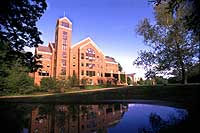 Founded in 1860 by Swedish settlers, Augustana College is a selective, independent college of the liberal arts and sciences, related to the Evangelical Lutheran Church in America.
Founded in 1860 by Swedish settlers, Augustana College is a selective, independent college of the liberal arts and sciences, related to the Evangelical Lutheran Church in America.
The 115-acre wooded campus in Rock Island, Illinois, is in the Quad Cities metropolitan area (population 350,000), on Interstate 80, approximately 165 miles west of Chicago, 230 miles north of St. Louis, and 176 miles east of Des Moines.
2,200 students from varied geographic, social, ethnic, and religious backgrounds. Student-to-faculty ratio is 13-to-one.
Student activities include music ensembles, theatre, debate, publications, broadcasting, student government, local Greek system, a wide variety of professional, religious, departmental, political, social, and service organizations.
The Augustana Vikings compete in the College Conference of Illinois and Wisconsin (CCIW) and NCAA Division III; eleven men's varsity teams; ten women's varsity teams; many intramural programs.
For more information visit the Augustana College Website.

Augustana Scholarship Fund at Lutheran Theological Seminary, Saskatoon
For information visit the Augustana Scholarship Fund Website.

Bethany College, Lindsborg, Kansas
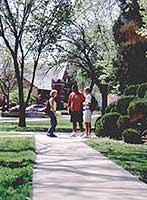 Bethany College was founded in the church, literally and historically. Bethany College continues to be a significant institution of the church, as an important liberal arts college of the Evangelical Lutheran Church in America.
Bethany College was founded in the church, literally and historically. Bethany College continues to be a significant institution of the church, as an important liberal arts college of the Evangelical Lutheran Church in America.
Bethany is owned by two synods of the ELCA — the Central States Synod and the Arkansas-Oklahoma Synod. Bethany College holds a covenant relationship with the Rocky Mountain Synod.
Today the College maintains a close relationship with the ELCA and many of its congregations and church units, as well as a partnership with the community of Lindsborg. The archives of the ELCA Central States Synod are located at Bethany College in the Wallerstedt Library, and it also contains many records of the predecessor body Augustana Lutheran Church (Synod) both Kansas Conference and West Central Conference.
In June 2002, Bethany College and the Lindsborg community were pleased to be hosts for the biennial national Gathering '02 of the Augustana Heritage Association.
Bethany and Students
"Meet the Challenge — Achieve your Goals!" Many students find Bethany to be a match, as their church college. Bethany College offers top quality education, with great value. As a Bethany student you will know your outstanding professors. You are not just a number at Bethany. At Bethany the professors and the staff will care about your goals and dreams.
Bethany College long has been noted for its enriched, active, lively cultural and educational environment in a Central Kansas community which is widely known for its distinctive lifestyle and activities.
Many people both off and on the campus appreciate the numerous offerings of music, art, lectures, seminars, intercollegiate sports, and more. Bethany can make a difference for you. Bethany offers:
- Individual attention
- Opportunities to grow — intellectually, spiritually, and towards your career goals.
Bethany has a full range of financial aid programs and merit scholarships. The campus co-curricular activities include 50 programs and organizations. There are music, theatre, academic clubs, religious organizations, 15 intercollegiate sports, and other activities. Bethany's solid liberal arts curriculum has 15 academic disciplines, and pre-professional and teacher education majors.
Take a look at Bethany, it can be for you!
Augustana Synod History: Bethany's Founding Legacy of Dr. Swensson
Bethany College has its roots in the Augustana Lutheran Synod. Bethany College was founded by Rev. Dr. Carl Aaron Swensson in the sacristy of Bethany Lutheran Church in Lindsborg, Kansas, on October 15, 1881. In 1879 Carl A. Swensson was only 22 years old when he arrived to become the second pastor of the unique Swedish-American community. He succeeded Rev. Dr. Olof Olsson, Lindsborg's Swedish immigrant pioneer spiritual founder and leader who later became a theological giant of the Augustana Lutheran Synod and president of the Augustana College and Theological Seminary in Rock Island, Illinois.
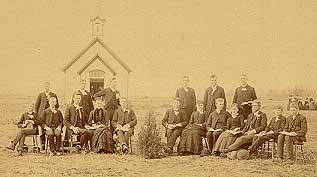
In the Lindsborg pioneer years of 1879-1904, Dr. Swensson provided dynamic and truly amazing church, community, and educational leadership. He was the second president of Bethany College. Traveling extensively throughout America, he was as an exceptionally popular Augustana Lutheran Synod leader, Swedish-American orator and writer, college president, parish pastor, and author. A popular member of Swedish-America at the time, Swensson was born in the United States at Chandler's Valley near Sugar Grove, Pennsylvania (south of Jamestown, New York), on June 25, 1857. Dr. Swensson's books and other writings were popular in Sweden, and several times he also traveled there.
On February 15, 1880, he was married to Alma Lind of Moline, Illinois — a highly talented musician, gifted leader, and a person who added greatly to her husband's resources through faithful support and inspiration. Alma Swensson provided much inspiration to her husband, the church, and the community. They had two daughters, Bertha and Annie Theo.
Swensson's founding of Bethany College represented a great venture in faith. He recognized that early founding visions had come from Olsson and his Värmland beloved friends. But it was he who, after a summer 1881 meeting in Lindsborg by the national Augustana Synod, "could not rid myself of the thought that the right time was at hand" to build the school or "air-castle" as many called it.
Swensson said: "I saw how God had blessed our settlements in this beautiful, flourishing, and liberty-loving state. But how our children and youth should obtain the necessary Christian education was a question...." On October 15, 1881, when classes began at Bethany Academy — the forerunner of Bethany College — the first teacher was J. A. Udden, a recent Augustana College graduate. Dr. Swensson also taught religion classes. [Smoky Valley People, by Emory Kempton Lindquist, Bethany College Press, 1953, Pp. 86ff.]
The college grew rapidly. A large five-story Old Main building was constructed, even while many pioneer supporters lived in dugouts.
It was on April 12, 1881, when Carl Swensson was present in Rock Island for the first rendition there of Handel's great oratorio, the "Messiah." Inspiration for the oratorio there had been brought by Dr. Olof Olsson after visiting London. It didn't take long until Carl and his wife Alma soon had a chorus rehearsing in Lindsborg in December 1881, and the first Lindsborg "Messiah" renditions were presented in March 1882, with orchestral and conducting help from Illinois. Who could have known the extent to which this nearly 13 decade major Lindsborg tradition would grow — to become the major internationally-known festival and religious presentation of community and college?
Swensson always was proud of his American citizenship, although he appreciated values of European culture, especially Swedish. The Bethany founder believed citizenship should not be a passive matter, and his entire life showed understanding of its dynamic quality. Political activities of Swensson constituted a great crusade which he thoroughly enjoyed. He was a capable and untiring campaigner for causes, issues, and political party. In 1889 he was easily elected to the Kansas legislature from McPherson County, and, like Olsson two decades earlier, Swensson represented a constituency proud of his presence among Topeka lawmakers. He fended away efforts to make him governor or U.S. congressman, because he felt called to make his unique contribution through Christian higher education at Bethany College. In those early years he was Bethany's greatest asset, and the College needed him. He served numerous roles in the Lutheran church, but first of all as Bethany Church pastor. His sermons were simple but inspiring evangelical messages. He was active as an officer of the Kansas Conference of Augustana Lutheran Church. He was a champion of Lutheranism among Swedish American circles, yet he realized the future belonged to a united Lutheran Church with American orientation. As president of General Council of Evangelical Lutheran Church of North America, he said: "...the Lutheran Church of America needs today...spiritual awakening...a more sincere confession of sin, a deeper contemplation of God's love, and a fuller and more real acceptance of Christ by faith.... Fanatic revivalism and dead formalism are the extremes...." Swensson produced an amazing range and amount of writing, including books, pamphlets, and hundreds of newspaper articles.
It is no accident that a larger-than-life marble statue of Dr. Swensson has been displayed prominently on the Bethany College campus since shortly after his death on February 16, 1904.
Bethany in the ELCA Church Today
Through the years since 1881 Bethany College has maintained a close relationship with the Lutheran Church — currently the ELCA, its congregations, and church units. The campus of Bethany College has changed over the course of time, and today the modern facilities provide some of the resources to make the College a widely recognized quality institution of higher learning. Bethany College continues to be a significant institution of the church as an important liberal arts college. For more information on church relations and other aspects contact the College campus pastor, the staff in the advancement office, or the admissions office.
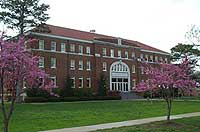
Religious Activities
The College provides opportunities for students to participate in a variety of religious activities designed to promote growth in faith and service in fellowship with other interested persons. These include Bible study, prayer groups, Bethany Youth Ministry, Fellowship of Christian Athletes, chapel participation, Bread for the World, Football Special Teams Ministry, and more. The Campus Christian Center (the Chi Rho house) affords space for most of these programs as well as the campus pastor's office.
Location and Setting
Bethany is just 20 minutes southwest of Salina, Kansas, and 70 miles north of Wichita (the largest city in Kansas), and 200 miles west of Kansas City. Bethany is a four-year fully accredited coeducational institution with 630 students. Bethany is affiliated with the Evangelical Lutheran Church in America. It is widely known especially for the cooperative college-community annual eight-day Messiah Festival of music and art, during Easter-week. Lindsborg is a community of 3,500 population which provides a strong and unique setting for Bethany as it meets its educational mission.
For additional information regarding Bethany College or Lindsborg, Kansas, please refer to the following web sites:

California Lutheran University
The youngest as well as one of the largest of the 28 colleges and universities of the ELCA (Evangelical Lutheran Church in America), California Lutheran was incorporated in 1959 long after the ethnic-Lutheran migrations that established many of the other Lutheran colleges in the United States. Because of the leading role that the Augustana Lutheran Church played in the founding of California Lutheran College (now California Lutheran University) and the university's strong contemporary ties with Swedish America and Sweden itself, CLU is one of the six institutions formally recognized today as "Swedish heritage colleges" by the Swedish Council of America.
The vision that led to the founding of California Lutheran College dates back to the late 19th century when the West Coast Missionary District of the Augustana Lutheran Church broached the idea of a Lutheran college in the West and was offered 40-50 acres of Leland Stanford's Palo Alto ranch for this purpose. This and a subsequent initiative to establish a Lutheran college in the Del Ray Hills west of Los Angeles in the late 1920s did not come to fruition. When a successful effort to found a Lutheran college in California was finally made in the mid-1950s, it was through a coalition of five Lutheran church bodies including the Augustana Lutheran Church.
Among the many Augustana Lutheran congregations that provided vital leadership and support in founding California Lutheran College, Angelica Lutheran in Los Angeles particularly stands out. The Carlsen and Samuelson families, which built much of the original campus and later the Samuelson Chapel, were members of Angelica as were many other founders and benefactors including Walter Danielson, who was dean of the consul corps in Los Angeles and Honorary Consul General for Sweden for four decades. Both as pastor of Angelica and then as President of the Southwest Synod of the LCA (Lutheran Church in America), the successor body to the Augustana Lutheran Church, The Reverend Dr. Carl Segerhammar played a particularly strong role in founding and sustaining the college. Dr. Segerhammar served as a Regent for two decades starting in 1959 and as Acting President in 1980-1981.
The Augustana Lutheran Church merged into the LCA in 1962. For many years after the "Augustana Saints," a group of former Augustana pastors, continued to meet on or near the CLU campus. Since 1962 the legacy of ecumenism and civic engagement associated with the Augustana Lutheran Church has been perpetuated through the Segerhammar Center for Faith and Culture at CLU. The university is represented today on the boards of both the Augustana Heritage Association and the Swedish Council of America and supports a Scandinavian Cultural Center, annual Nordic Symposium, and annual Scandinavian Festival with strong Swedish emphases. CLU's exchange program with the University of Kristianstad, Sweden, and participation in activities of the Los Angeles Swedish-American Chamber of Commerce help round out the social and economic as well as political, cultural, and religious strong attachments of the university to its Swedish Lutheran identity.
For additional information regarding California Lutheran University please call 805-492-2411, or visit the California Lutheran University Website.

Gustavus Adolphus College
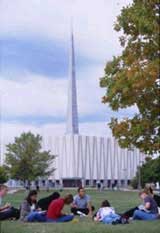 For additional information regarding Gustavus Adolphus College or St. Peter, Minnesota, please refer to the following web sites:
For additional information regarding Gustavus Adolphus College or St. Peter, Minnesota, please refer to the following web sites:

Immanuel Health Systems
For more information, visit the Immanuel Health Systems Website.

Lutheran School of Theology at Chicago
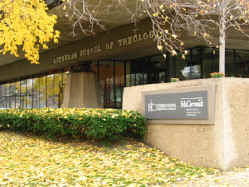
The Lutheran School of Theology at Chicago prepares women and men to proclaim the good news of God's love in Jesus Christ to all people.
On September 4, 1962, the Lutheran School of Theology at Chicago was formed when Augustana Theological Seminary, Grand View Seminary, Chicago Lutheran Theological Seminary and Suomi Theological Seminary merged. The formation of LSTC was a result of the merger of the American Evangelical Lutheran Church, Augustana Lutheran Church, Finnish Evangelical Lutheran Church of America � Suomi Synod, and United Lutheran Church in America to establish the Lutheran Church in America (LCA.)

A seminary of the Evangelical Lutheran Church in America, LSTC is marked by five essential commitments: urban, ecumenical, university-related, global, and multicultural. These marks summarize the characteristics and commitments of the school as it prepares leaders for the church.
The Augustana Chapel at LSTC, dedicated in May 2003, is the most recent evidence of the vibrancy of the Augustana tradition at LSTC and its support of the mission of the seminary. LSTC's global mark, its commitment to preparing leaders for the whole church, a heart for social justice and lively daily worship are other ways the Augustana tradition continues here.
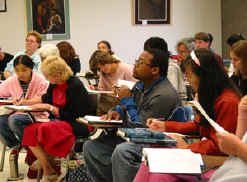
The Lutheran School of Theology at Chicago is within walking distance of Lake Michigan and is located near the University of Chicago on the city's south side. Students have access to the resources of the ten seminaries of the Association of Chicago Theological Schools and the University of Chicago School of Social Work and School of Divinity. In 2003, McCormick Theological Seminary (Presbyterian Church USA) moved into its new administration building, ushering in a new era for both seminaries as they move into a closer collaboration as a result of the Lutheran-Reformed agreement forged in the late 1990s.
JKM Library, jointly operated on campus by LSTC and McCormick, holds a collection of more than 450,000 items and over 900 domestic and foreign periodicals, making it one of the largest theological collections in the United States.
LSTC's approximately 350 students are enrolled in one of five degree programs offered: Master of Arts, Master of Divinity, Master of Theology, Doctor of Ministry, or Doctor of Philosophy. A number of students complete a dual-degree program with the University of Chicago to receive a Master of Arts and Social Work or a Master of Divinity and Social Work.
For additional information, please call 800-635-1116 or visit the Lutheran School of Theology at Chicago Website.

Midland Lutheran College
Founded in 1883, Midland Lutheran College educates students to learn and lead in the world with purpose. Midland is a four-year, liberal arts and sciences college affiliated with the Evangelical Lutheran Church in America. Faith, learning, quality, respect and stewardship are the core values which guide its mission. Located in Fremont, Neb., students choose from nearly 50 majors and pre-professional programs leading to bachelor and associate degrees. In addition, a wide variety of co-curricular activities complete a total education for the MLC student. A variety of local and regional events and conferences are also hosted at the College. To learn more, visit Midland Lutheran College on the web at: www.mlc.edu or call (402) 721-5480 or (800) 642-8382. Midland Lutheran College, "A New World of Possibility."
Building the way to "A New World of Possibility"
A brief look at the history of Midland Lutheran College
Midland Lutheran College's rich history is rooted in both college and church mergers. On September 15, 1887, Midland College was founded in Atchison, Kansas by the General Synod of the Evangelical Lutheran Church. The name of Midland College was selected because of its central location in the United States.
Although many things have changed over the years, one thing remains the same—Midland Lutheran College exists for students and remains focused on attending to and growing the whole human being.
Midland Lutheran College president, Dr. Steven E. Titus, believes fully in this mission. "Our Lutheran theology makes for wonderful educational philosophy, the cornerstone of which is the discernment of vocation, of calling," Titus said. "It is our responsibility to help awaken people to the possibilities in their lives—help them discern their own gifts and talents, and then help them find ways to deploy those gifts and talents in the service of others."
Midland started out much smaller than it is today. Originally only three courses of study were offered: the classical, which led to a Bachelor of Arts degree; the Latin-scientific, which led to a Bachelor of Science; and the literary, which led to a Bachelor of Letters degree. Seventeen freshmen attended Midland during its first year and tuition for the year was $40.
Another institution, the Western Theological Seminary, was established in connection with Midland in 1893. Though technically a separate entity from the college, it was housed in the same building, Atchison Hall, and was included in the academic catalog; the college faculty also taught its courses.
Midland remained in Atchison until 1919 when it moved to its present location in Fremont, Nebraska. The College merged with Luther Junior College in 1962. Founded in 1883, Luther was located in Wahoo, Nebraska. With the merger, Midland College officially became Midland Lutheran College.
The early years of Midland in the Fremont community were highlighted with growth in the numbers of students, faculty and facilities. In the fall of 1919, the College opened its doors at its new home in Fremont. The property acquired by Midland had previously been called Fremont Normal School and Business College. Although Midland replaced the previous school, key elements of the normal school were integrated into the academic course offerings, including a School of "Commerce", a strengthened music department and summer school. Because of these changes, Midland more than doubled the enrollment of its last year in Atchison from 201 students to 456 students. The number of faculty also increased to meet the needs of the enlarged student body.
The "Warriors" became the school nickname for Midland in 1919. A change was needed to avoid confusion because Midland's first nickname was the "Tigers", which was the same as the nickname for Fremont High School. Orange and black were established as the official school colors in Atchison, Kansas, and remain the school colors today.
The first building acquired after the move to Fremont was the Nye mansion on Nye Avenue. It was purchased in 1921 for $35,000 and became the home of the Seminary. This opened space in the science hall (later renamed Clemmons Hall) for other classes.
Additional needs were served by the construction of a new multi-purpose building, the Gymnasium-Commons, in 1924. When constructed, the gym had the largest playing floor in the Nebraska Church College Conference, which was Midland's athletic conference at the time. At one end of the floor was a stage, which allowed the playing floor to double as an auditorium. There was also a kitchen and dining room with an apartment for the cook and a central heating plant to provide heat for the campus buildings. Now named the Olson Student Center, in honor of Dale and Fern Olsen, the facility is alive with activity as the home for student services, and the student union.
Excavation began on a new residence hall for women in 1924. After its completion in 1927, it was named after the first head of the women's residence hall in Atchison, Helen Beegle.
The Great Depression was a difficult time for the College, but enrollment was still surprisingly high. In 1931, it reached its highest point in the history of Midland until the 1970s, with a total of 848 students. With the increase in enrollment, a new residence hall was needed. Unfortunately, insufficient funds were available for construction, and it became the practice for men to live off-campus in private homes until the completion of Men's Memorial Hall in 1947. This hall was named to honor the 23 Midland students who died in service during World War II.
During the post-World War era, a number of significant improvements were made at Midland. Probably most important was the full accreditation of Midland in the North Central Association in 1947. Student health services were established, and two new degrees were offered, the Bachelor of Science in Education and the Bachelor of Science in Business Administration.
Midland continued to grow during the 1950s and 1960s. The library was completed in 1954. To acknowledge the Luther College roots, the building was named Luther Library. Other Luther memorabilia has been placed outside the library including the Luther arch, sundial and a large boulder from the Wahoo campus. ; Wings were added to the east and west ends of Beegle hall in 1958 and 1962. In 1959, Augustine Hall was built. It provided additional housing and a new dining hall.
To help adjust for the growing enrollment and shortage of classroom space, a new two-story classroom building was completed in 1961. The building was named Fremont Hall in recognition of the financial support Midland had received from the Fremont community.
The scientific needs of students and faculty were provided in 1965 with the completion of Swanson Hall of Science. The building included classrooms, laboratories, an auditorium, an observatory and a planetarium designed by Dr. Gilbert Lueninghoener. Two additional residence halls, Gunderson Hall and Benton Hall, were added in 1966 and 1967. In 1968, the Frank H. Hopkins Physical Education Building was completed. The largest facility on campus, it includes a large indoor arena for basketball volleyball and track, a swimming pool, handball court, fitness center, weight room, classrooms and office space for faculty and coaches.
In 1975, the Musbach Art Center was completed to provide for the needs of the art department and its students. A new administration building, named the Anderson Complex in honor of Marie and John Anderson, was completed in 1984. It houses classrooms and offices for business, education, humanities, journalism and nursing, as well as administrative offices.
Kimmel Theatre was added to the College in 1998. Named in honor of Richard P. and Laurine Kimmel, the 26,200 square foot theatre features a platform stage, digital lighting and sound systems, as well as dressing rooms and a scene shop.
In 1999, the addition of the "Cross at the Center" fountain added beauty to the campus green. A focal point of the mission and vision of Midland as a college of the church, the Cross at the Center fountain flows with the water of baptism.
Just completed in the summer of 2004, the L. Dale and Ruth Lund Hall and Atchison Hall are the latest additions to the Midland campus. Lund Hall is named in honor of former Midland Lutheran College President, L. Dale Lund and his wife, Ruth. Atchison Hall is named in honor of the City of Atchison, Kan., where Midland was founded. The halls will be home to 96 Midland students and feature apartment-style living.
Midland Lutheran College has undergone numerous physical changes throughout the years, but its concern for students, regard for academic quality and a commitment to human values has remained the same. With a foundation based on faith, learning, quality, respect and stewardship, Midland Lutheran College's tradition of growing and nurturing the whole human being will continue to enrich the lives of students — the leaders of tomorrow — offering "A New World of Possibility" for centuries to come.
For additional information, please visit the Midland Lutheran College Website.

Mosaic
Ministry | Mosaic opens doors to extraordinary lives so that people with disabilities may experience God's gift of wholeness of life in all of the wonderful ways they choose for themselves.
Beginnings | In the first quarter of the 20th century, Nebraska Lutherans in Axtell and Sterling built Bethphage and Martin Luther Homes from the ground up so that people with disabilities would have opportunities to realize their potential. In 2003, these organizations consolidated, forming Mosaic, to continue serving a common mission in the lives of people with disabilities across the United States and throughout the world.
Commitment | Grounded in its mission, Mosaic listens to the choices expressed by you, its clientele. It creates the options and seeks out skilled and diligent employees to support those choices. It works accountably with donors and funding sources to enable individuals to fulfill their dreams.
Opportunities | Mosaic provides supports and advocacy in partnership with people who have disabilities, that all may realize God's gift of wholeness of life. Mosaic's staff and supporters believe that every individual is a person of worth.
Disabilities supports | If you or someone you care about has developmental disabilities, then you can find a variety of supports through the ministry of Mosaic: individualized services, living options, work choices and spiritual nurture.
Senior living | Mosaic also offers opportunities to elders seeking independent living with services and supports. If you count yourself or someone you love among this group, we can offer you comfort, security, affordability, accessibility and community.
Advocacy | Mosaic advocates with people who have disabilities so they may choose appropriate supports, defend their rights and express their opinions. Advocates find their voices heard locally in their own communities, in statehouses across the land and in several countries around the world.
Foundation | Like all ministries, the work of Mosaic depends upon prayer and donations. To help you, as a donor, be a good steward of your resources, we offer options for charitable giving and estate planning to support the ministries of Mosaic.
Accreditation | The staff of Mosaic works hard to assure that each person touched by its supports and advocacy receives the services to meet his or her hopes, dreams and expectations. Programs of Mosaic are committed to seeking out, meeting the standards for and maintaining accreditation from independent accrediting bodies.
Affiliation | Mosaic is an affiliated social ministry organization of the Evangelical Lutheran Church in America, a recognized service organization of the Lutheran Church–Missouri Synod, and a member of Lutheran Services in America.
Mosaic is an affiliated social ministry organization of the Evangelical Lutheran Church in America, a recognized service organization of the Lutheran Church–Missouri Synod, and a member of Lutheran Services in America.
Mission | In partnership with people who have disabilities, Mosaic provides supports and advocates that all may realize God's gift of wholeness of life.
Mosaic will not discriminate in matters of employment or service delivery on the basis of race, creed, age, color, sex, religion, national origin, ancestry, physical or mental disability, marital status or veteran status.
Status | Mosaic and The Mosaic Foundation are nonprofit 501(c)3 organizations.
For additional information please visit the Mosaic Website.
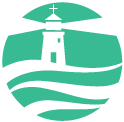
Seafarers and International House
"An ecumenical Lutheran ministry among seafarers and travelers"
123 East 15 Street
New York, NY 10003
212-677-4800, fax 212-505-6034
Website: www.sihnyc.org
SEAFARERS AND INTERNATIONAL HOUSE may be one of the lesser known of the nine remaining Augustana institutions. Our mission among seafarers and travelers is a little unusual and our clientele — seafarers, domestic violence victims, immigrants, critically-ill families and other travelers in distress — are mobile and easy to overlook. People away from home for protracted periods or under forced circumstances lack the safety net of family, friends, and community — and it becomes more difficult to cope with life's daily challenges. Pastoral care, hospitality, social assistance and advocacy serve a real purpose for these individuals and reflect, we believe, the Augustana tradition of social consciousness and global awareness.
Many of our mission activities take place in our 84-room hotel. Recent refurbishment of this facility was celebrated on September 27, 2004 — the 40th anniversary of the dedication of the original building. This is a re-dedication of the "House that Augustana Built."
You are welcome at any time to visit and/or to stay in our hotel. It is located just east of Union Square and south of Gramercy Park. Seafarers and International House is the only seafarer guesthouse operated by a church agency in New York City. We welcome travelers from all over the globe, and you don't have to be a seafarer to take advantage of the wonderful facilities and rates we offer. Come and enjoy our sparkling new guest rooms. Seafarers and International House features amenities and conveniences beyond what one expects from a budget property.
Augustana Shared Clergy Endowment Fund at S&IH supports the port chaplaincy portion of a clergyperson position to increase the S&IH ability to reach out and serve thousands of additional seafarers. At the same time, it facilitates the revitalization of a troubled urban congregation through the call of a new pastor and a "turn-key" outreach program.
For more information, visit the Seafarers And International House Website.
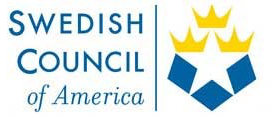
Swedish Council of America
For information visit the Swedish Council of America website.